Cannabis Nutrient Schedule: A Comprehensive Guide for Optimal Growth
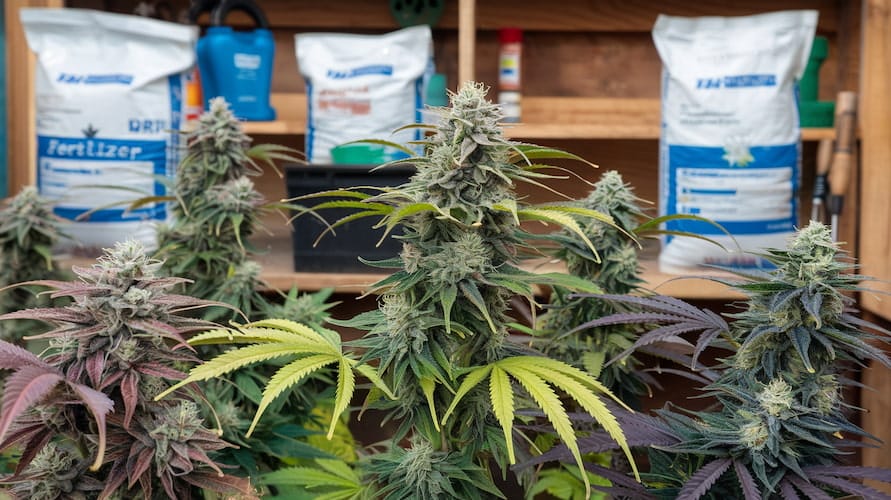
Growing healthy, high-yield cannabis plants requires a deep understanding of their nutrient needs at every stage of their life cycle. Just like any living organism, cannabis thrives on a balanced diet, and following the ideal cannabis nutrient schedule can make the difference between a successful harvest and a disappointing one.
In this guide, we’ll walk you through the essential nutrients cannabis plants need, how to set up a feeding schedule, and specific nutrient requirements for different growth stages. Whether you’re a beginner or a seasoned grower, this comprehensive cannabis nutrient schedule will ensure your plants receive the nutrients they need for robust growth, high yields, and potent buds.
Understanding Cannabis Nutrients
Before diving into a specific feeding schedule, it’s essential to understand what nutrients cannabis plants need and why.
Macronutrients vs. Micronutrients
Cannabis plants require two main types of nutrients: macronutrients and micronutrients.
Macronutrients
These are the primary nutrients cannabis needs in larger quantities to support growth. They include:
- Nitrogen (N): Critical for leaf and stem growth during the vegetative stage. Nitrogen is responsible for healthy green foliage.
- Phosphorus (P): Vital for root development, flower formation, and overall energy transfer within the plant.
- Potassium (K): Helps with water absorption, enzyme activation, and the production of sugars, which support flower development.
Micronutrients
Micronutrients are needed in smaller quantities but are still essential for plant health. These include:
- Calcium: Supports cell wall structure and overall plant rigidity.
- Magnesium: Essential for photosynthesis and the creation of chlorophyll.
- Sulfur: Aids in the production of proteins and enzymes.
- Iron, Manganese, Zinc, Copper, Boron, Molybdenum: All play minor but vital roles in plant metabolism and growth.
Organic vs. Synthetic Nutrients
You can choose to feed your plants with organic or synthetic nutrients. Organic nutrients are derived from natural sources and tend to be slower-releasing, which can be gentler on plants. Synthetic nutrients, on the other hand, are manufactured for quick absorption and precise feeding.
Both methods have their advantages, and choosing between them depends on your growing goals. Organic nutrients promote soil health and sustainability, while synthetic nutrients offer greater control and faster results.
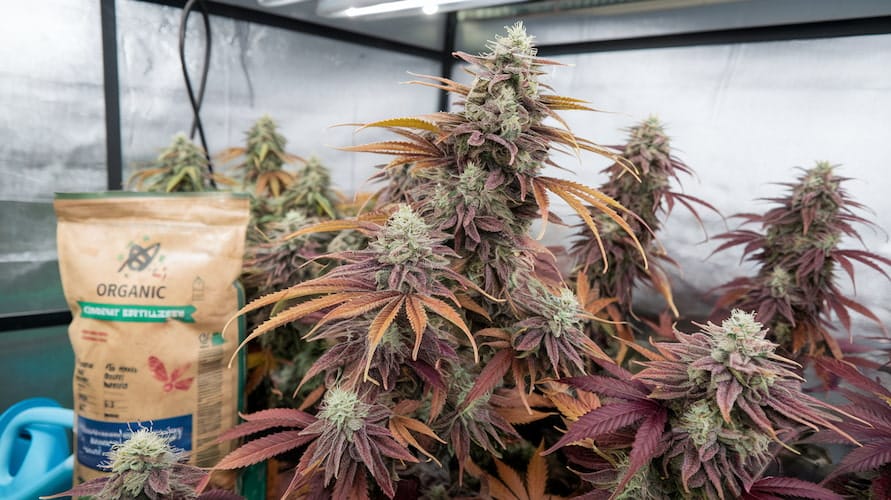
Cannabis Life Cycle and Nutrient Requirements
Cannabis goes through distinct life stages, each requiring different levels of nutrients. Your cannabis nutrient schedule should align with the growth stage of your plants to ensure they receive the proper macronutrients and micronutrients at the right time.
1. Seedling Stage (Weeks 1-2)
Nutrient Needs:
- Low nutrient levels
- Primary focus: Water and light with minimal nutrients
During the seedling stage, cannabis plants are extremely delicate and don’t require heavy feeding. Too many nutrients can lead to “nutrient burn,” which stunts growth. Seedlings rely mostly on the stored energy in their seeds and only need mild nutrients in small amounts.
Seedling Nutrient Schedule:
- Use a 1/4 strength nutrient solution, or opt for products specifically designed for seedlings.
- Ensure a pH level between 5.5 and 6.5.
- Water with distilled or filtered water.
Tip: Avoid overwatering at this stage, as it can easily drown seedlings and prevent root development.
2. Vegetative Stage (Weeks 3-8)
Nutrient Needs:
- High nitrogen levels
- Moderate phosphorus and potassium
- Increased calcium and magnesium
The vegetative stage is when your cannabis plants focus on producing leaves and stems, establishing a solid structure to support flowering later on. Nitrogen is the most critical nutrient during this period, as it fuels chlorophyll production and photosynthesis, promoting strong, leafy growth.
Vegetative Cannabis Nutrient Schedule:
| Week | Nitrogen (N) | Phosphorus (P) | Potassium (K) | pH Level |
|---|---|---|---|---|
| 3 | High | Medium | Medium | 5.5-6.5 |
| 4 | High | Medium | Medium | 5.5-6.5 |
| 5 | High | Medium | Medium | 5.5-6.5 |
| 6 | High | Medium | Medium | 5.5-6.5 |
| 7 | High | Medium | Medium | 5.5-6.5 |
| 8 | High | Medium | Medium | 5.5-6.5 |
Key Tips for the Vegetative Stage:
- Increase feed gradually: Start at 1/2 strength nutrient solution in week three and gradually increase to full strength as your plant develops.
- Monitor plant size: Larger plants may need slightly higher doses.
- Boost micronutrients: Add calcium and magnesium supplements, especially if using reverse osmosis water, as these nutrients can become deficient during rapid vegetative growth.
3. Pre-Flowering (Week 9)
Nutrient Needs:
- Balanced nitrogen, phosphorus, and potassium
- Additional micronutrients
The pre-flowering phase (sometimes called the “stretch” phase) is a transitional period where your plants will increase in height and size before entering the full flowering stage. During this time, you need to maintain a balance of nitrogen, phosphorus, and potassium.
Pre-Flowering Cannabis Nutrient Schedule:
| Week | Nitrogen (N) | Phosphorus (P) | Potassium (K) | pH Level |
|---|---|---|---|---|
| 9 | Medium | Medium | Medium | 6.0-6.2 |
4. Flowering Stage (Weeks 10-16)
Nutrient Needs:
- High phosphorus
- High potassium
- Lower nitrogen levels
During the flowering stage, cannabis plants shift their energy from leaf production to producing buds (flowers). This means nitrogen levels should be reduced, while phosphorus and potassium levels should be increased to promote large, resinous buds.
Flowering Cannabis Nutrient Schedule:
| Week | Nitrogen (N) | Phosphorus (P) | Potassium (K) | pH Level |
|---|---|---|---|---|
| 10 | Low | High | High | 6.0-6.2 |
| 11 | Low | High | High | 6.0-6.2 |
| 12 | Low | High | High | 6.0-6.2 |
| 13 | Low | High | High | 6.0-6.2 |
| 14 | Low | High | High | 6.0-6.2 |
| 15 | Low | High | High | 6.0-6.2 |
| 16 | Low | High | High | 6.0-6.2 |
Key Tips for the Flowering Stage:
- Watch for nutrient deficiencies: Signs like yellowing leaves or slow bud development can indicate nutrient issues. Adjust your feeding schedule accordingly.
- Add bloom boosters: Some growers opt for bloom boosters, which are high in phosphorus, to encourage dense bud formation.
- Flush before harvest: In the last one to two weeks of flowering, it’s crucial to flush your plants with pure water (no nutrients) to remove any remaining salts and nutrients that could affect the taste of the final product.
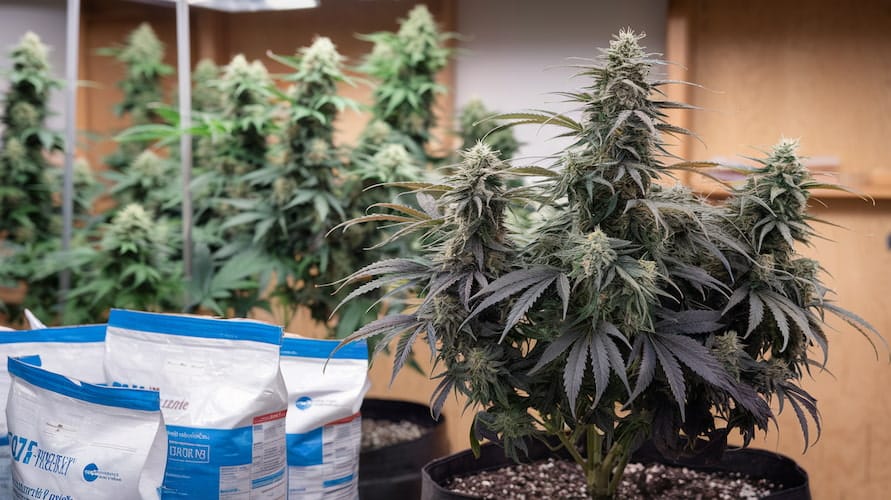
Important Factors in Managing Your Cannabis Nutrient Schedule
1. pH Levels
One of the most common mistakes new growers make is not monitoring the pH levels of their water and nutrient solutions. Cannabis plants can only absorb nutrients within a specific pH range, and if the pH is off, it can lead to nutrient lockout (where nutrients are present but can’t be absorbed by the plant).
- Soil pH: Ideal range is 6.0-7.0.
- Hydroponics/Soilless pH: Ideal range is 5.5-6.5.
Test the pH of your nutrient solution before feeding your plants, and adjust as needed using pH-up or pH-down products.
2. Watering and Nutrient Frequency
Cannabis plants thrive on a “wet-dry” cycle, meaning they prefer to be watered thoroughly and then left to dry out before being watered again. Overwatering is a common issue that can lead to root rot and nutrient lockout.
General Watering Guidelines:
- Water plants thoroughly until runoff appears at the bottom of the pot.
- Let the top one to two inches of soil dry out before watering again.
- Adjust watering frequency based on plant size, pot size, and environmental conditions.
As for nutrients, most feeding schedules recommend feeding nutrients every other watering. This helps avoid nutrient buildup in the soil and ensures plants can absorb the nutrients efficiently.
3. Monitoring Plant Health
One of the best ways to ensure your nutrient schedule is working is by observing your plants. Healthy cannabis plants should have:
- Vibrant green leaves during the vegetative stage.
- Dense bud formation and trichome production during the flowering stage.
- No signs of nutrient burn, which shows up as yellow or brown leaf tips.
Common issues like nutrient deficiencies or toxicities can often be corrected by adjusting your nutrient solution or pH levels.
Tailoring Your Cannabis Nutrient Schedule
No two cannabis plants are the same, and the ideal nutrient schedule can vary depending on strain, growing medium, and environment. Here are a few factors to consider when tailoring your feeding schedule:
1. Strain-Specific Nutrient Needs
Some cannabis strains are more nutrient-hungry than others. For instance, Sativa-dominant strains may require lighter feeding, especially with nitrogen, compared to Indica-dominant strains. Always research the specific strain you’re growing to ensure you’re providing the right balance of nutrients.
2. Growing Medium
Your growing medium also affects how you feed your plants. In soil, nutrients tend to be retained longer, so you may not need to feed as frequently. In hydroponic systems, nutrients are delivered directly to the roots, so you may need to adjust your cannabis nutrient schedule for more frequent feedings.
3. Environmental Conditions
Environmental factors like temperature, humidity, and light intensity can impact your plants’ nutrient needs. For example, plants growing in higher temperatures may require more frequent watering and nutrient feeding, as they tend to transpire more. Adjust your schedule accordingly based on your growing conditions.
Sample Cannabis Nutrient Schedule
Below is a sample cannabis nutrient schedule that you can follow for a typical 16-week cannabis growth cycle.
Week-by-Week Cannabis Nutrient Schedule:
| Week | Nitrogen (N) | Phosphorus (P) | Potassium (K) | Key Notes |
|---|---|---|---|---|
| 1-2 | Low | Low | Low | Seedling stage, 1/4 strength nutrients. |
| 3-8 | High | Medium | Medium | Vegetative stage, focus on nitrogen. |
| 9 | Medium | Medium | Medium | Pre-flowering, balanced nutrients. |
| 10-16 | Low | High | High | Flowering stage, focus on phosphorus and potassium. |
Cannabis Nutrient Schedule: Conclusion
Mastering the cannabis nutrient schedule is a crucial step in becoming a successful grower. By understanding the nutrient needs of your plants at each growth stage and adjusting your feeding schedule accordingly, you can ensure healthy plants, large yields, and potent buds.
Remember, the key to a successful grow is balance. Too little or too much of any nutrient can lead to problems, so always start with lower doses and adjust based on your plant’s needs. Happy growing!
Now that you know all about the ideal cannabis nutrient schedule, get your garden started today by shopping the collection of regular, feminized, and autoflower cannabis seeds and clones at Seeds Here Now.
FAQs
1. What are the most important nutrients for cannabis plants?
The three most important nutrients (macronutrients) for cannabis are Nitrogen (N), Phosphorus (P), and Potassium (K). These nutrients are essential for different stages of growth:
- Nitrogen: Promotes leafy growth, especially during the vegetative stage.
- Phosphorus: Encourages root development and flower formation.
- Potassium: Helps with water absorption, enzyme activation, and bud development.
In addition to these macronutrients, cannabis also requires secondary nutrients like Calcium and Magnesium, along with trace amounts of micronutrients.
2. How often should I feed my cannabis plants?
It depends on the plant’s growth stage, the medium you’re growing in, and the specific nutrients you’re using. A common schedule involves feeding every other watering. For example, water with nutrients on one day and water with plain water the next time to avoid nutrient buildup.
During the vegetative stage, plants generally require more frequent feeding, while in the flowering stage, nutrient needs shift, but regular feeding is still important.
3. How do I prevent nutrient burn?
Nutrient burn occurs when plants receive too many nutrients, leading to yellow or brown leaf tips. To prevent it:
- Start with low doses of nutrients, especially with new strains or products.
- Gradually increase nutrient strength as your plants grow and only if needed.
- Always monitor your plant’s health and adjust the feeding schedule accordingly.
- Flush your plants with plain water in the last one to two weeks before harvest to remove excess nutrients.
4. Can I use tap water to feed my cannabis plants?
Tap water can be used, but it often contains chlorine or chloramine, which can be harmful to cannabis plants. It’s recommended to filter your tap water or let it sit out for 24 to 48 hours to allow the chlorine to evaporate. Test your tap water’s pH and ppm (parts per million) to ensure it’s suitable for cannabis. If your tap water is too hard (high mineral content), it can cause nutrient lockout, and using filtered or distilled water might be a better option.
5. How do I adjust the pH of my nutrient solution?
Cannabis plants absorb nutrients most efficiently within a specific pH range. The ideal range for soil is 6.0 to 7.0, and for hydroponics or soilless growing, it is 5.5 to 6.5.
- Use a pH meter to test your nutrient solution.
- If the pH is too high or low, use pH-up or pH-down products to adjust it to the correct level.
6. Should I feed cannabis plants differently in soil compared to hydroponics?
Yes, feeding schedules differ based on the growing medium:
- In soil, nutrients are absorbed more slowly, so you can feed less frequently, and the soil often has its own nutrient supply.
- In hydroponics, nutrients are delivered directly to the roots, meaning you’ll need to feed more frequently but can be more precise with nutrient levels. pH and ppm levels are also more critical in hydroponic systems.
7. What is nutrient lockout, and how do I fix it?
Nutrient lockout happens when your plants cannot absorb nutrients properly, even if they are present in the soil or water. This often occurs due to incorrect pH levels or an excess buildup of salts from nutrients.
To fix nutrient lockout:
- Check and adjust your pH to ensure it’s in the optimal range.
- Flush your plants with plain water to remove excess salts and minerals.
- Reintroduce nutrients at a lower dose once the issue is resolved.
8. How can I tell if my cannabis plants have a nutrient deficiency?
Nutrient deficiencies often show up as specific symptoms:
- Nitrogen deficiency: Yellowing leaves, starting from the bottom of the plant.
- Phosphorus deficiency: Dark green or purple leaves with brown spots.
- Potassium deficiency: Leaf tips and edges turn brown and curl.
- Magnesium deficiency: Yellowing between leaf veins, often on older leaves. If you notice any of these symptoms, check your pH levels first, as improper pH is a common cause of nutrient lockout, which can mimic deficiencies. Adjust feeding if necessary.
9. Do I need to flush my cannabis plants?
Yes, flushing is an important step, especially before harvest. Flushing involves giving your plants only plain water (no nutrients) for one to two weeks before harvest. This helps remove any nutrient buildup and improves the final taste and smoothness of the buds by eliminating excess salts and chemicals.
10. Can I grow cannabis organically without synthetic nutrients?
Absolutely! Many growers prefer to use organic nutrients derived from natural sources like compost, fish emulsion, or bat guano. Organic growing focuses on building healthy, living soil that provides nutrients slowly over time. While it may not deliver as immediate results as synthetic nutrients, organic growing promotes sustainability and can enhance the natural flavor profile of the buds.
11. How do I create a custom nutrient schedule for my plants?
To create a custom cannabis nutrient schedule, consider the following factors:
- Strain: Some strains are more nutrient-hungry than others.
- Growing medium: Soil retains nutrients longer than hydroponics, so adjust accordingly.
- Environmental conditions: Plants may need more nutrients in warmer environments due to increased transpiration.
- Growth stage: Adjust your nutrient levels as the plant transitions from the seedling, vegetative, and flowering stages. Start with a basic nutrient schedule, observe your plants’ reactions, and adjust based on their needs.
12. Can I overfeed my cannabis plants?
Yes, overfeeding is a common mistake, leading to nutrient burn or toxicity. Signs of overfeeding include:
- Burnt leaf tips (nutrient burn)
- Dark green leaves (excess nitrogen)
- Slowed growth
- Drooping leaves
To avoid overfeeding, start with low doses of nutrients and gradually increase as needed. Regularly flush your plants to remove excess nutrient buildup.
Suggested Articles
;)
;)
;)



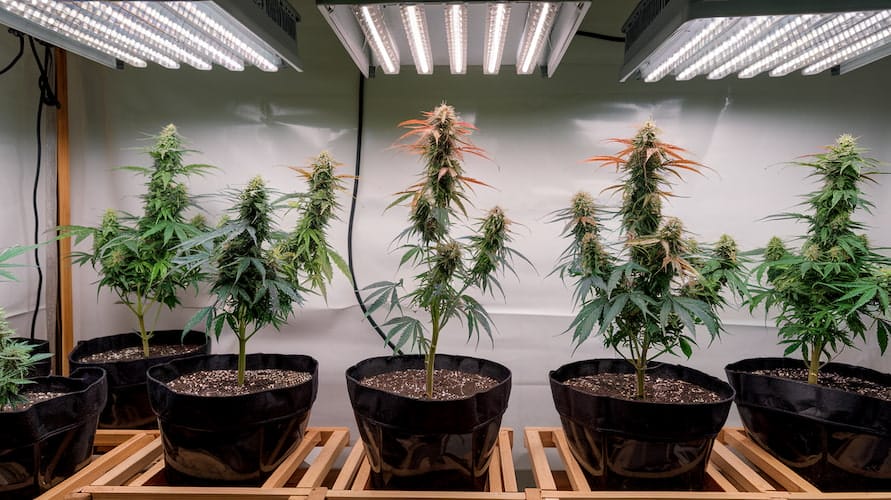
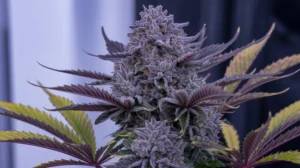
 11 Dec 2025
11 Dec 2025  5 min read
5 min read
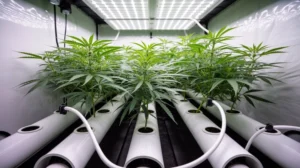
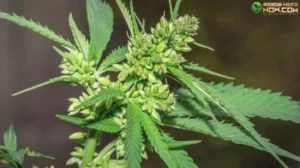
 October 22, 2024
October 22, 2024 


RESPONSES (0)
No responses yet. Be the first to respond!